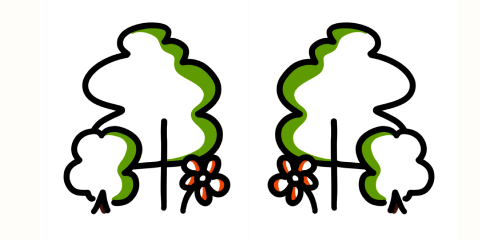Challenging start
Initially, the small forest on De Optimist’s schoolyard faced a challenging start. The children who played there daily caused some damage to the young trees. Research conducted by Wageningen University & Research revealed that the forest’s growth, CO₂ storage, and biodiversity were comparatively lower than in other forests where children have less access. In hindsight, having fewer paths through the forest might have helped prevent some of the damage caused by play.
Seven years later
In 2025, seven years after planting, the Tiny Forest has become fully integrated into the childrens’ daily lives as a natural green playground. Inside the forest, you can find many traces of play — not only well-worn paths, but also dens, makeshift constructions, broken branches, and even some rubbish.
Nevertheless, nature has proven resilient, and the forest seems strong enough to withstand these impacts. After seven years, it is gradually transforming into a more typical forest-like environment.








